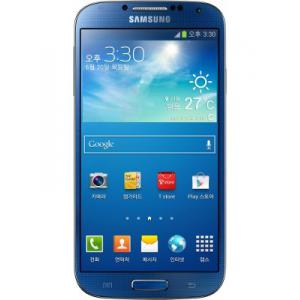Flash firmware on Samsung Galaxy S4 LTE Advanced
Mobiles >> Samsung >> Samsung Galaxy S4 LTE Advanced| Specifications | Reviews | Secret codes |
| Unlock phone | Root phone | Bypass FRP |
| Backup | Flash Firmware | Screenshot |
How to flash Samsung Galaxy S4 LTE Advanced?
Why reinstall the firmware?
Errors begin to appear in the Android operating system.
Some installed applications do not open.
Some programs from the Play Market do not start.
The phone restarts by itself for no reason.
The phone slows down a lot during operation.
You are not satisfied with the functionality of the stock firmware.
Where can I find the firmware?
On the official website of your phone manufacturer.
On sites where third-party developers and phone manufacturers post custom or official OS.
What should be done before installing the firmware?
Create a backup copy of user data and transfer it to your computer.
Insert an SD card into the gadget. It must have enough memory for the firmware.
Find out the exact model of your smartphone.
Fully charge your device. If the battery runs out during the firmware, the device will no longer turn on.
Find and download the archive with Firmware. Place it on the SD card.
Installing TWRP Recovery
Install the Official TWRP App from the Play Store on your phone. And run this application.
At the first start, you need to give consent to future manipulations, as well as consent to granting the Superuser rights to the application. Check the checkboxes and press the 'OK' button.
After moving to the next screen, you need to select the 'TWRP FLASH' item and give the application root rights.

On the main screen of the application, the 'Select Device' drop-down list is available, in which you need to find and select the device model for installing the recovery.
After selecting a device, the application will direct the user to a web page to download the appropriate modified recovery environment image file. Download the suggested *.img file.
After downloading the image file, go to the main screen of the Official TWRP App and press the 'Select a file to flash' button. Then we tell the program the path where the file loaded in the previous step is located.
Click the 'FLASH TO RECOVERY' button and confirm your choice, click 'OK' in the question window.
The recording process is very fast, and upon completion, the message 'Flash Completed Succsessfuly!' appears. Click 'OK'. The TWRP installation procedure can be considered complete.
Copy the firmware and other necessary files to the SD card.
Insert a SD memory card into the phone.
To reboot in recovery, it is convenient to use a special item in the Official TWRP App menu, accessible by pressing the button with three stripes in the upper left corner of the main screen of the application. We open the menu, select the 'Reboot' item, and then tap on the 'REBOOT RECOVERY' button. The phone will reboot into the recovery environment automatically.
Firmware via TWRP

Before flashing, it is recommended to clear the 'Cache' and 'Data' sections. This will delete all user data from the device, but avoid a wide range of software errors and other problems. You must press 'WIPE' on the main screen.
Everything is ready to start flashing. Press the 'Install' button.

On the file selection screen, at the very top there is a 'Storage' button for selecting an SD card.
Select the location where the files were copied. Press the OK button.

Select the firmware file and click on it. A screen opens with a warning about possible negative consequences, as well as the item 'Zip signature verification'. This item should be checked by placing a cross in the check-box, which will avoid using damaged files when writing to the phone's memory sections.
The procedure for writing files to the phone's memory will begin, accompanied by logging and filling in the progress bar.
The completion of the installation procedure is indicated by the inscription 'Successful'.
Summary: Also Known As: Samsung Galaxy S4 LTE-A SHV-E330S, Samsung Galaxy S4 LTE-A; Operating System: Android v4.2.2 (Jelly Bean); Custom UI: TouchWiz UI; SIM Slot(s): Single SIM, GSM; SIM Size: SIM1: Micro; Network: 4G: Available (doesnt support Indian bands), 3G: Available, 2G: Available; Dimensions: 139.7 (H) x 71.3 (W) x 9.1 (T) mm; Weight: 147 grams; Colours: Blue Pink Red; Screen Size: 5 inches; Screen Resolution: Full HD (1080 x 1920 pixels); Pixel Density: 441 ppi; Display Type: Super AMOLED; Touch Screen: Capacitive Touchscreen, Multi-touch; Chipset: Qualcomm Snapdragon 800 MSM8974AA; Processor: Quad core, 2.3 GHz, Krait 400; Graphics: Adreno 330; RAM: ...
Comments, questions and answers on the flash firmware Samsung Galaxy S4 LTE Advanced
Ask a question about Samsung Galaxy S4 LTE Advanced




